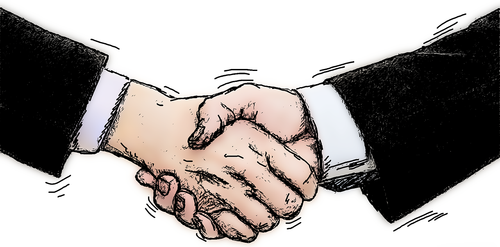5 Pre-, Post-, and On-Site Activities that Will Boost Your Presence at the Next Industrial Trade Show
Industrial trade shows, like Design News' upcoming Pacific Design & Manufacturing, deserve proper planning in order to truly get the most out of them as marketing tools. Here's how to plan effectively.
February 7, 2016
So the show is booked, the booth and collateral are packed, and the reps/hotel rooms/flights are confirmed. All set to go, right? Well ... that only depends on the goals you set for the show.
When well planned, industrial trade shows are an effective marketing tool that:
Generate highly qualified, targeted leads
Allow companies to meet suppliers and clients (old and new), as well as understand trends
Create awareness about products and services
Position your company as an expert
Help you close more deals
To achieve business results and experience returns on the investment, a good plan starts with a strategic decision: What trade show your company should attend, and why? This definition is a critical first step.
Once the right show is selected (because of the right reasons), it’s time to start planning. But be aware: getting proper preparation for a trade show goes beyond the logistics. Companies willing to succeed should combine many “ingredients” to make the show a success.

Let’s review five of these “ingredients”:
1. Plan with enough time
Booking the show two or three months before the date means that you’ll get whatever space is left. And you will pay more for it. Some lucky winners land on the booth that another company cancelled at the last minute -- but that is just luck and not planning. On top of that, booking close to the date will result in paying extra for everything you need, from the booth, itself, to the Internet connection, to the carpet. Everything gets more expensive when the show is closer.
How about the marketing material? The booth, collateral, electricity ... Are you taking with you just that brochure, or do you need to develop a specific, targeted piece of material for a high-quality audience? This last one takes time. Are all of your marketing elements integrated, reflecting your company in the best light? Give yourself enough time to check for pieces that could deserve some updates, or even specially develop pieces for the particular audience of the show.
Products and services don’t sell just because they are good. If your company is committed to investing in a trade show presence, take full advantage of the opportunity. Results will reflect the difference between rushing and a professional job done with enough time.
[Meet and network with your peers at Pacific Design & Manufacturing, Feb. 9-11, at the Anaheim Convention Center.]
2. Set up goals and KPIs
How do you measure performance and level of success at a show?
This starts before the show, not after you have returned from it. It starts with the definition of the strategic goals your business has for this particular show (this goes back to choosing the right show) and the measurable objectives you want to achieve:
What are your company’s business goals?
How does this particular trade show support you to get there?
What indicators will define the good or not-so-good performance? Number of leads? Number of orders?
The answer to these questions should help you plan for the show. Don’t forget to discuss with your sales team how all of the key performance indicators should be recorded on your CRM system.
3. Understand what makes your product different, and relevant, for that particular show
You may want to present one or a group of particular products/solutions, tailored to the specific interest of this show audience.
Have you put together any thoughts lately about what makes your company and solutions unique? Are you really different from the competition? How?
A perfectly crafted value-added proposition, particular to the solution that will be highlighted at the show, is critical. Reflect your value-added proposition on each piece of content and every time your company rep connects with people at the show. Be consistent.
READ MORE ABOUT PACIFIC DESIGN & MANUFACTURING:
4. Reflect your message in the best possible light
A big challenge for technical companies participating in trade shows is how to capitalize their presence and convert opportunities into real business. One and many times I see companies that make big investments to be part of the show but only to lack the basic ammunition they need to professionally approach opportunities.
The mix of display, collateral, personal presence, giveaways … every element must be there because they help position your company as the best solution in the market. Trade shows offer many distractions for visitors, and you need to stand out from the crowd.
Trade shows are a big marketing investment. Don’t minimize the power of professionally developed marketing (strategies and materials) versus amateur. And make the most of the investment by amplifying your message through all of the promotional channels you can access: website, email, social media, blogging, promotion through the show. One or all of them -- every channel will help you get the message out.
5. Follow-up
That’s where most companies fail. The pile of business cards will never convert into sales if further conversations don’t take place. Be sure to follow up. Give the leads a proper follow up.
Remember those KPIs? Now is the time to measure results against the planning. Evaluate your performance and define adjustments required for future shows.
When a company is properly prepared, an industrial trade show can be less of a “marketing expense” and more of an “investment.”
Mix these “ingredients” according to your company’s unique taste and needs. Prepare your “special mix” to make the most of your next trade show and set the basis for success.
Dafne Orbach is president of NicheMktg.

You May Also Like

.jpg?width=300&auto=webp&quality=80&disable=upscale)

